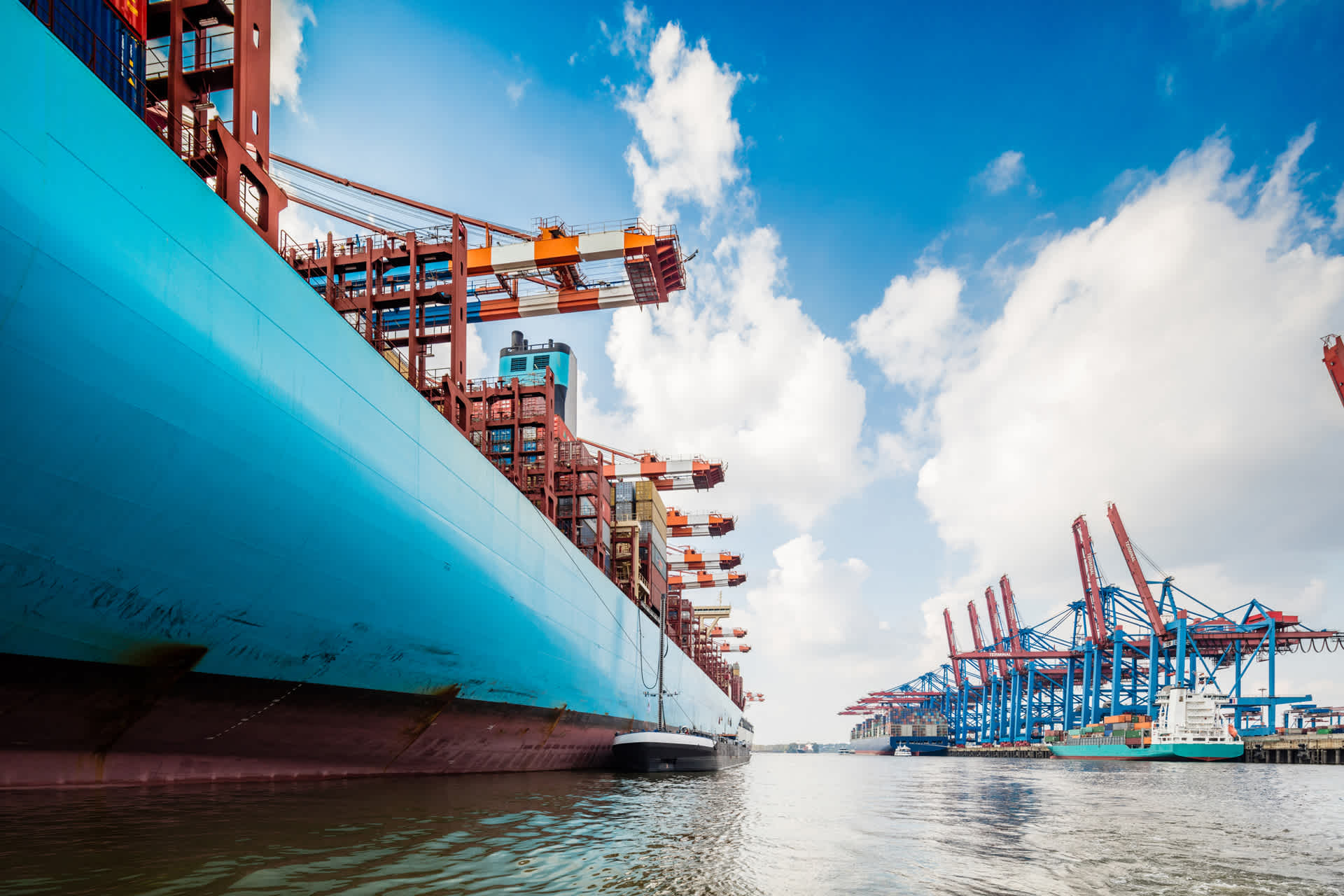Global Logistics Update
Freight Market Update: February 22, 2022
Ocean and air freight rates and trends; customs and trade industry news plus Covid-19 impacts for the week of November 16, 2021.
Freight Market Update: February 22, 2022
North America Freight Market Update Live: Thurs, February 24 @ 8:30 am PST | 11:30 am EST
Freight Market Updates Live: Get the latest information on the ocean and air freight markets by region. Spend 30 minutes with our experts, including time for Q&A.
European Freight Market Update Live: March 8 at 16:00 CET / 15:00 GMT
Ocean Freight Market Update
Asia → North America (TPEB)
- Schedule Delays remain severe on TPEB, as estimates from industry experts indicate a return to pre-Covid normalcy would take several months to a year. Carriers are working to move out aging cargo that arrived to origin ports just prior to or during Lunar New Year. The premium market remains strong and standard FAK space remains capped relative to demand. All TPEB players are also preparing for potential disruptions that may result from existing ILWU labor contracts expiring this June.
- Rates Rate levels remain elevated and the premium market is strong.
- Space Critical
- Capacity/Equipment Critical/Severe Undercapacity
- Recommendation Book at least 4 weeks prior to CRD. Consider premium options and carrier IPIs through the PSW gateway. Be flexible in regard to equipment and routings.
Asia → Europe (FEWB)
- Following a slower period after Lunar New Year we are now starting to see some volume recovery and increased booking intake. Space and equipment continue to be tight due to a very high amount of blank sailings in weeks 8, 9, and 10. These are not only the planned blank sailings but also ad hoc ones due to schedule delays. Schedule reliability remains very low with many vessel shiftings and changes.
- Rates Rates remain at a high level for the post-CNY period mostly with extensions until the end of February. Rates for March will be announced in the next few days.
- Space Critical space situation
- Capacity/Equipment Severe equipment shortage across all Asia origins.
- Recommendation Book at least 3 to 4 weeks prior to CRD. Consider premium options, which may be limited. Be flexible in regard to equipment.
Europe → North America (TAWB)
- Congestion at USEC ports worsening with new delays on all major ports with waiting times going from 6 to 8 days. USWC waiting time not improving despite yard congestion being cut by almost a third.
- Rates Ocean levels continue to remain high with further increases expected through February and into the beginning of March.
- Space Critical, especially to the USWC
- Capacity/Equipment Capacity remains tight for both North Europe and Mediterranean services. Better equipment availability at port. Shortages remain at inland depots.
- Recommendation: Book 5 or more weeks prior to CRD. Request premium service for higher reliability and no-roll guarantees.
Indian Subcontinent → North America
- USEC berthing delays causing port omissions on key services. Recently announced omissions on the INDAMEX service for Savannah and Charleston are expected to last for one full service rotation or until April 7th.
Rates remain high through February. Premium rate levels should be expected for small Indian ports and Bangladesh as demand exceeds vessel/equipment supply. - Space to the USWC is and will remain a challenge into 2022. Port omissions on services to the USWC continue to cut capacity out of the ISC. Recommendation is to move on premium services or look for alternative routing to USEC and transload to final destination. Space to the USEC will be difficult into Savannah and Charleston until April as bunched vessels off the coast of USEC are resulting in longer turn-around time back to origin and port of discharge omissions. This leaves a gap of sailings for the most consistent services typically relied upon for ISC-USEC.
- Equipment remains a challenge at smaller Indian ports in the South and South-East as well as inland container depots (ICDs). Carriers are encouraging shippers’ use of their own origin carriage services to mitigate equipment shortages. Equipment is normalized at key ports such as Nhava Sheva and Mundra.
- Recommendation remains to load via wet port instead of using ICDs to avoid delays and accessorial fees.
North America → Asia
- Vessel arrivals and available capacity remain fluid for USWC POLs. Rail availability over the USWC is limited as carriers are strictly adhering to allocations. USEC situation sees Savannah operations improving however port omissions continue for the South Atlantic affecting both Savannah and Charleston ports. Erratic vessel schedules continue to create void sailings and delays in schedules creating significant challenges with posted earliest return dates and vessel cut-offs at the port.
- Rates: Limited GRI activity announced for March.
- Equipment Deficits on containers and chassis continue to plague IPI origins. Availability for standard equipment at ports has not been an issue, but any special equipment is hard to come by.
- Recommendation Please place bookings 4 to 6 weeks in advance to secure your equipment and vessel space.
North America → Europe
- There is available capacity on the TAEB trade from the US East and Gulf Coasts but schedule issues persist for New York, Charleston and Savannah. US West Coast service to Europe is extremely tight due to void sailings and skipped ports caused by systematic delays. Seattle port of call remains suspended indefinitely.
- Rates: One GRI anticipated for Mediterranean destinations for March.
- Equipment Deficits are still plaguing IPI origins. Availability for standard equipment at ports has not been an issue, but any special equipment is hard to come by.
- Recommendations: Please place bookings 3 to 4 weeks in advance for East Coast/Gulf sailings and 6 weeks for Pacific Coast sailings.
Air Freight Market Update
Asia
- N. China: The market continues to drop in comparison to previous weeks. Additional Covid cases were also detected in the Suzhou and Wuxi areas, resulting in the closures of industrial parks and employees working from home. We expect demand to pick up only when the Covid situation is under control. Until then, we will continue to see weak demand in the market for the next few weeks.
- S. China: Covid continues to be a key issue in South China with the number of cross border trucks reduced. Some TPEB flights remain canceled and overall demand is soft with rates continuing to drop. FEWB rates also continue to drop as demand is still slow to recover.
- Taiwan: Due to the upcoming long weekend at the end of the month, space is expected to become slightly congested this week. The fuel surcharge will also increase starting on March 1. Overall, cargo demand is relatively flat and origin congestion has improved compared to previous weeks.
- SE Asia: Demand ex-Vietnam and Thailand continues to be very soft with little indication when the market will pick back up. This situation may last until mid-March.
Europe
- Demand modest this week, bigger projects are still on the market as shippers need to meet lead times from production delay. This is maintaining rates at a stable level, in line with what we see in the first Q1.
- Storm Eunice put some stress on capacity at the last minute, approximately 200 flights last weekend were canceled each day because of the heavy wind conditions ex AMS. Impact on cargo should be limited and is expected to improve this week.
- Deferred routings are still providing a viable routing option if already tight lead times can take it. We also see cheaper options on the market to secondary hubs where airlines have regular passenger flights.
- Limited terminal congestion reported across EU hubs.
- Fuel surcharges have increased as the IATA jet fuel index hits the highest rates since 2015. Expect these high fuel surcharges to be passed through by the airlines for the coming months
- Advice remains in place ex-EU: continue to place bookings early for optimal rates and solutions.
Americas
- Demand to Asia, Europe and Latam remains stable in most cases. Demand to AMS/FRA remains high and early bookings are suggested for large shipments.
- Capacity is manageable and airlines are back on schedule.
LAX/ORD/JFK terminal ground-handlers are busy, but are not facing the impairing backlogs from the past months, which has a positive effect on the export side. - Larger shipments from major outbound gateways can take 2 to 3 days from booking to uplift.
- Most terminals provide reduced free time for storage, and have earlier close-outs for exports to accommodate throughput times and screening requirements.
- Rates to Latam, Europe and Asia have not experienced significant changes, but fuel has slightly increased.
Trucking & Intermodal
Asia
- Mainland CN <> HK Cross Border Trucking Operations heavily impacted by COVID in HK: Positive COVID cases are increasing everyday, more and more cross border truckers are tested positive, which causes the whole market capacity to drop drastically.
- Rates: Trucking cost increased significantly due to the eligible cross border trucker shortage, area codes (for cross border truck pickup) cancellation and priority setup for daily necessities (food etc.).
- Capacity: The whole market capacity drastically dropped, only around 20~30% of normal time.
- Recommendation: Barge service has been deployed as an alternative solution. But the capacity is also limited and may change with the dynamic market.
Americas
North American Port Dwell times and port conditions.

Sources: Piertrucker.com portofvirginia.com hapag-lloyd.com
Flexport is outperforming market averages in major markets. Flexport achieved this success by building capacity and carrier depth in all markets, and following the trucking strategy of centralizing volumes with a handful of carriers to gain leverage and preferable treatment has paid off. We expect Savannah to drastically improve as we increase our dedicated assets in the area that also includes 50 dedicated chassis. Oakland is facing separate challenges with port congestion, chassis shortages, and an upcoming vote about relocating the A’s stadium to port property. Flexport is expanding our capacity, our carrier ITS is opening a large yard and deploying chassis nearby in Richmond, VA.
Full Truckload Update

Source: https://www.dat.com/industry-trends/trendlines/van/demand-and-capacity *Load-to-truck ratios represent the number of loads posted for every truck posted on DAT Load Boards. The load-to-truck ratio is a sensitive, real-time indicator of the balance between spot market demand and capacity. Changes in the ratio often signal impending changes in rates.
Customs and Compliance News
CBP Informs Trade Community That New FTZ Rules are in the Works
CBP has provided some hints at new FTZ rules they seek to enshrine into the Code of Federal Regulations. Jim Swanson, Director of CBP’s Cargo and Security Controls Division, indicated the new regulations would involve procedures done in the e214 form trial run, changes to the five-day rule to simplify logistics, and the elimination of form 216.
Cross-border Movement Through Ambassador Bridge Resumes
Resulting from a resumption of regular movement crossing the Ambassador Bridge, CBP will no longer process formal entry shipments through the Detroit-Windsor tunnel. CBP instead will “return to normal processing of very limited commercial traffic of "Brass" and "Informal" Entries.”
CBP Seeks Comments Related to CTPAT
CBP has issued a federal register notice seeking comments from the Trade community on collecting additional information for CTPAT’s vetting process to allow CBP to identify potential violators. Additional information sought if and when CBP implements the changes would include date of birth, country of birth of the stakeholder in question, and an IP address for law enforcement purposes. Current or prospective Flexport clients seeking to submit comments should contact their assigned team or reach out via the Flexport website.
Factory Output News
- China continues to remove the equity cap, car manufacturers are taking more controls over joint venture and expect more car manufacturers coming to China in the future Source
- Taiwan Driven by strong demand for electronic products, Taiwan’s January export orders grew to to $58.87 billion in Jan (23rd month of expansion) Source
- Vietnam Samsung invests $920 million to expand factory in North Vietnam Source
- Thailand to speed up and transform manufacturing sector to promote economic growth Source
- Malaysia Rubber exports expected to increase to RM240 billion in 2022 Source
- India and UAE signed an economic partnership agreement (CEPA) on 18th Feb. This agreement is likely to benefit about USD 26B worth of Indian products that are subjected to 5% import duty by UAE Source
- Bangladesh plans to boost its leather export to $12 Bil in 2030 Source
Freight Market News
Demand for shipper-owned containers on the rise The Loadstar has reported that freight forwarders are increasing the dependence on shipper-owned containers, or SOCs, as a strategy to address supply-chain pressures and improve reliability. A study has reported that the percentage of the top 50 forwarders accepting SOC requests has risen from 6% in 2019 to 18% in 2021.
Port of Los Angeles achieves record-hitting month. According to SupplyChainDive, the Port of Los Angeles has made strides to reduce the number of empty containers waiting in its docks, to address its busiest January on record. In addition to the decrease in average dwell time, the number of containers waiting on docks has seen a 75% drop from October 25th.
Freight Market Update is a complimentary service from Flexport, the modern freight forwarder. If you're not already a subscriber, we invite you to subscribe here.
Please note that the information in our publications is compiled from a variety of sources based on the information we have to date. This information is provided to our community for informational purposes only, and we do not accept any liability or responsibility for reliance on the information contained herein.


